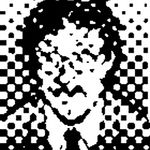- Home
- Illustrator
- Discussions
- Gradients on Images Not Exporting to PDF Corrcetly
- Gradients on Images Not Exporting to PDF Corrcetly
Copy link to clipboard
Copied
Hello,
I am trying to fulfill my dream of becoming a children's bilingual book author. I illustrated my pages in AI, exported them as PDFs, and everything looks great when I combine the PDFs into a new file with Adobe Acrobat.
However, when I upload the PDF/X file to Kindle Direct Publishing, my illustrations containing gradients are messed up. Some parts of the illustration are missing color, some have blocks of colors rather than a gradient transition, and some are void of color altogether. I don't know what else to do.
I've done the following:
-Raster at 300ppi
-CMYK color
-Flattened the AI file
-Made sure no images were needing embedding
Please help. I am so close to finishing my book.
 2 Correct answers
2 Correct answers
These could be Freeform gradients, they result in non native art in a pdf.
Rasterizing the gradient (Object > Rasterize) can solve it.
Or as I was saying earlier to use the transparency flatener
Explore related tutorials & articles
Copy link to clipboard
Copied
A linear or radial gradient should not give problems. The more recently introduced free form gradients are not supported in some non Adobe PDF viewers.
Copy link to clipboard
Copied
About non-native art from the manual:
When you import artwork from an Adobe PDF file, it’s possible to introduce data that you can’t create within Illustrator. This is called non-native art and includes monotone, duotone, and tritone images. You can also generate non-native art within Illustrator by using the Flatten Transparency command to preserve spot colors.
Illustrator’s ability to preserve non-native art is useful in many situations. For example, Illustrator maintains the spot color information in linked PDF files when you output color separations.
By default, non-native art is labeled <Non-Native Art> in the Layers and Appearance panels. You can select, move, save, and perform basic transformations (such as scaling, rotating, or skewing) on non-native art. However, you cannot select and edit its individual components. In addition, you must rasterize non-native art before editing it with the liquify tools.
To convert non-native art to an Illustrator object, choose Object > Rasterize.
Copy link to clipboard
Copied
It looks like much of this has been suggested before, but I'd advance it all to keeping it really simple: export/save the images as JPEG or PNG, in RGB even if CMYK is an option, and with no layers, alpha channels, etc.
Just Plain Pictures. Not AI that has to be interpreted through ID to PDF to KDP. The only place this might cause problems is with the words; if the text is too jagged/granular, remove it from the illustrations and lay it in as actual text over the Just Plain Picture images.
-
- 1
- 2
Get ready! An upgraded Adobe Community experience is coming in January.
Learn more
